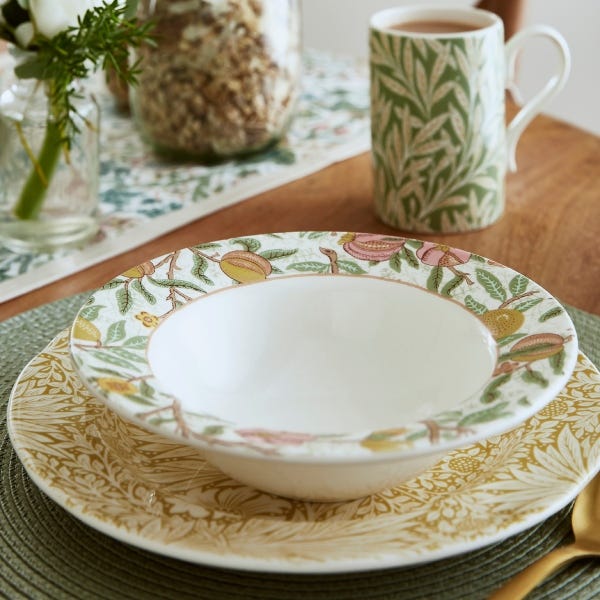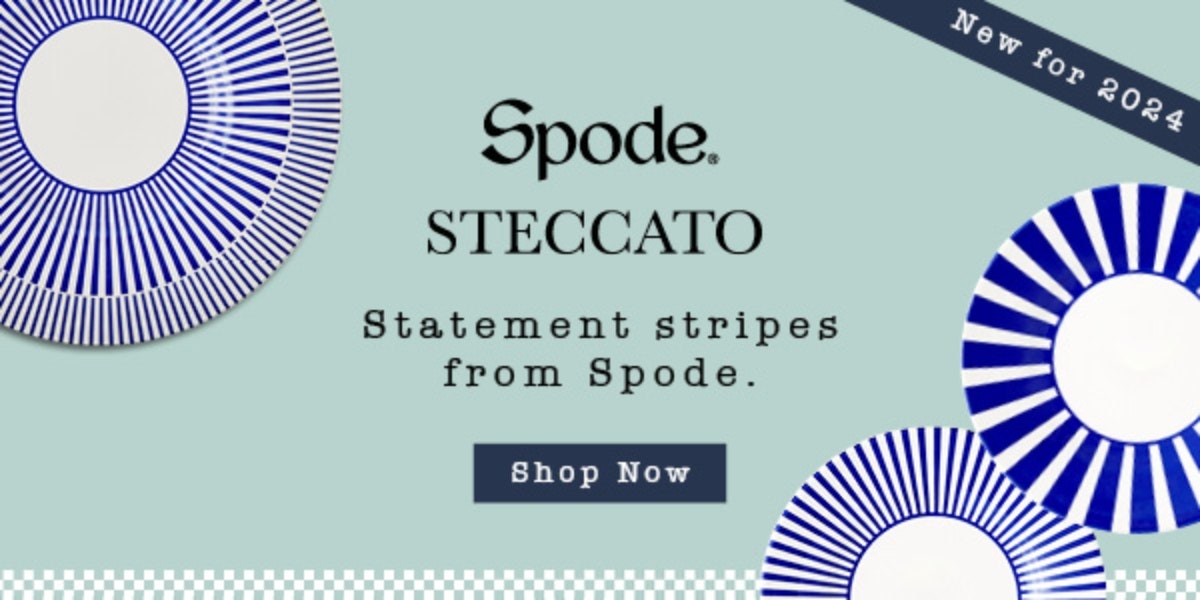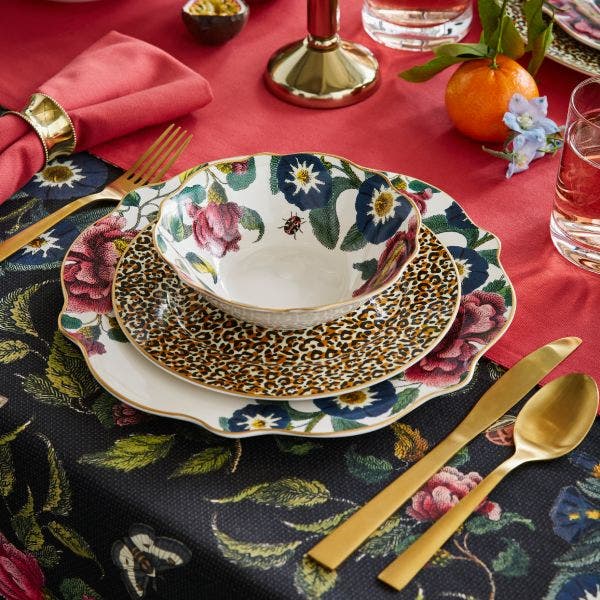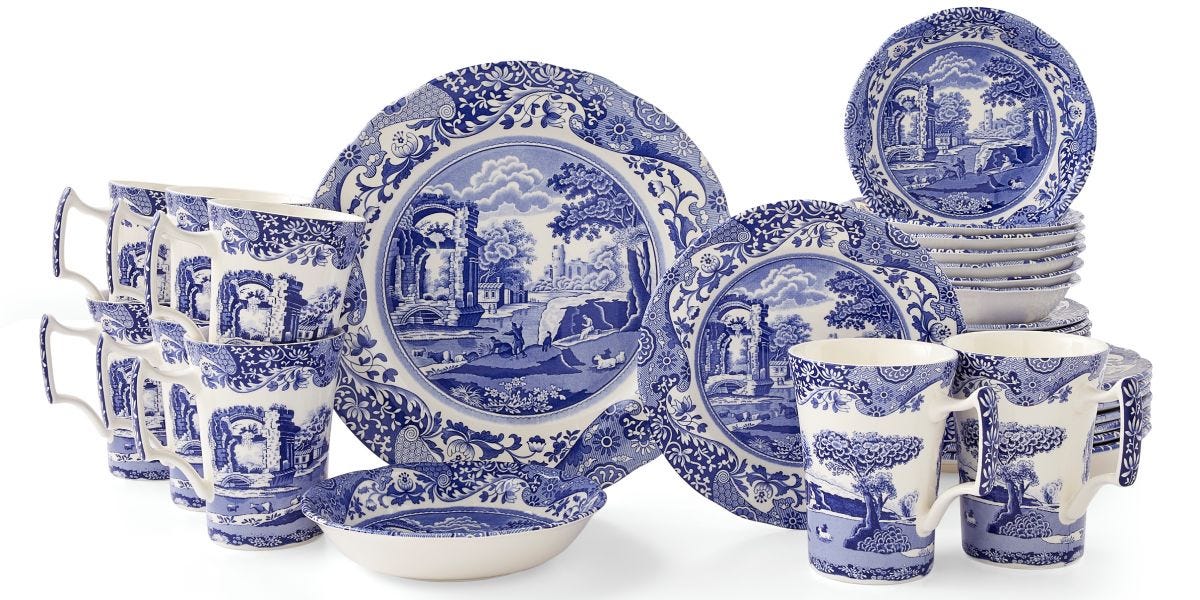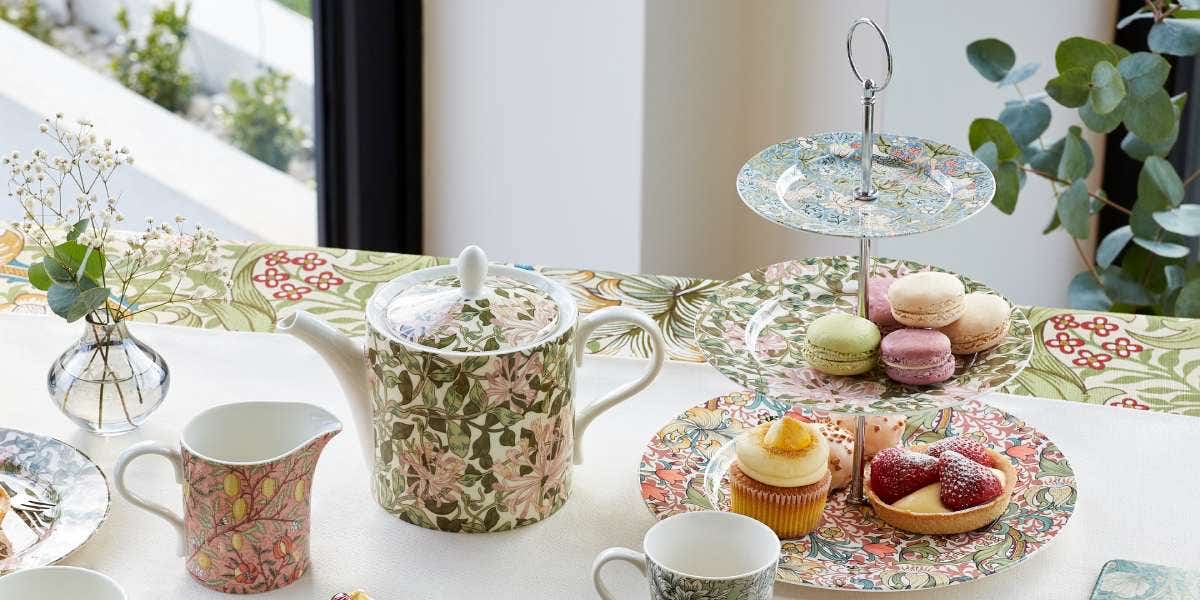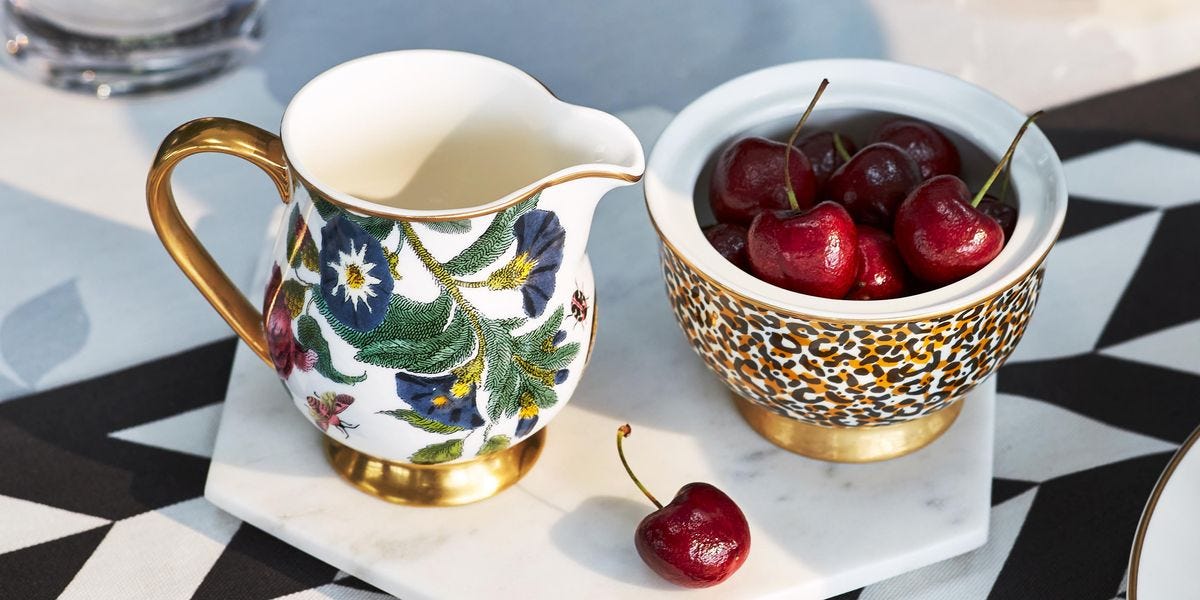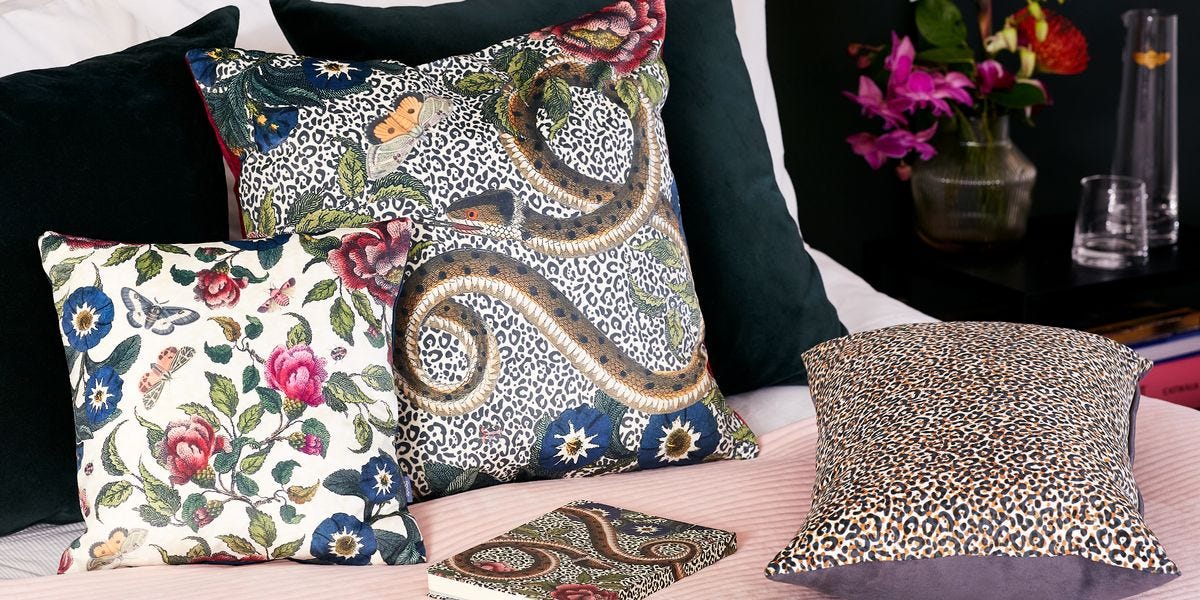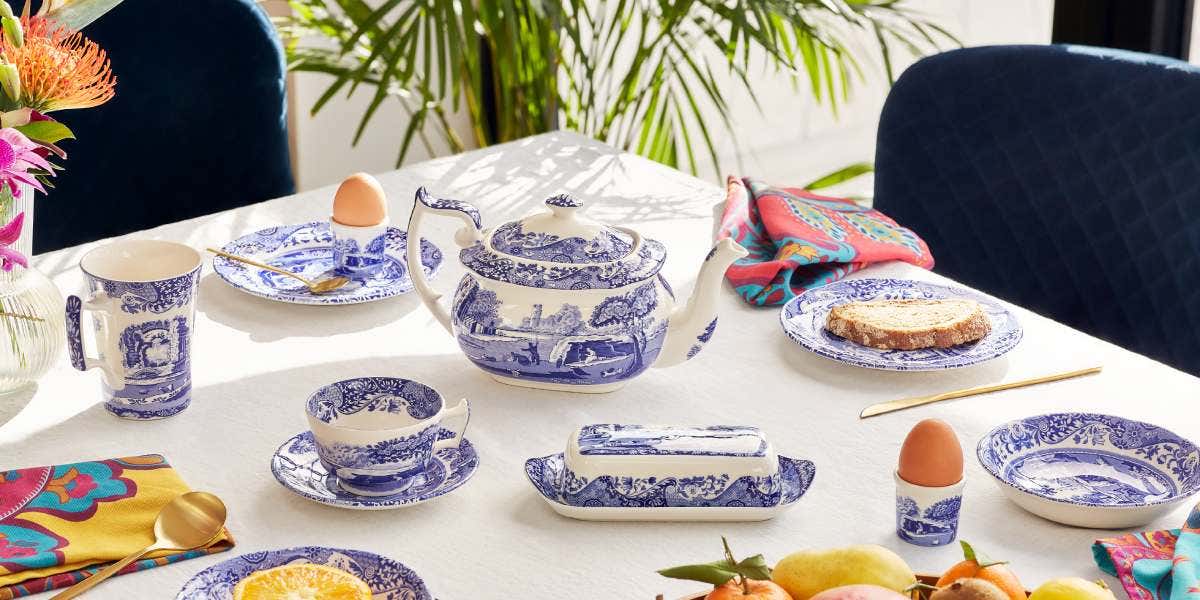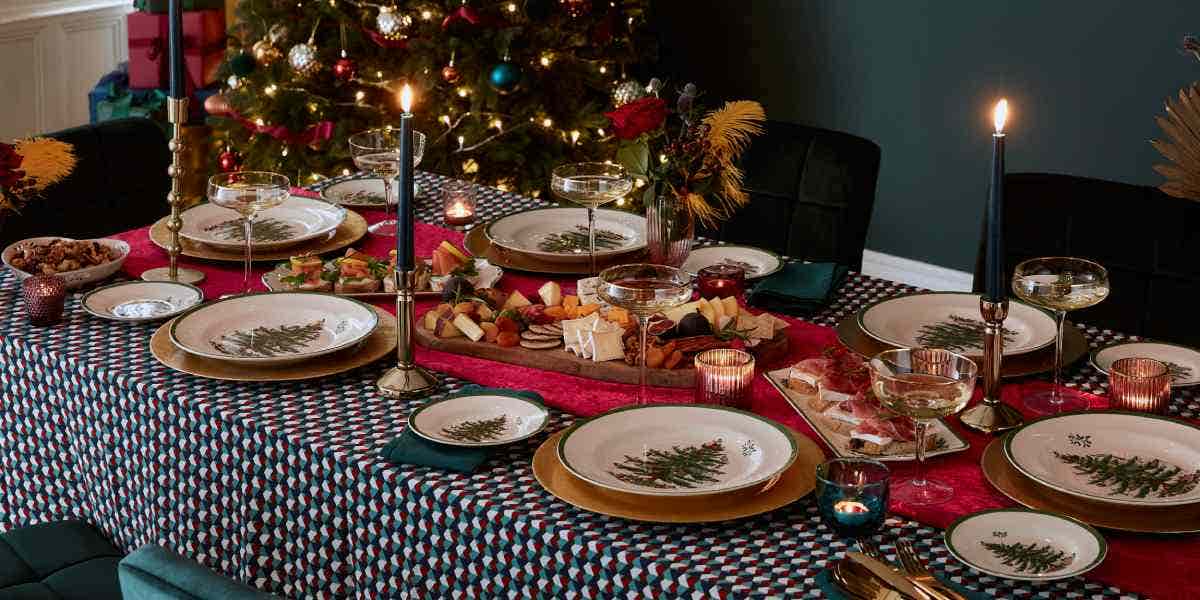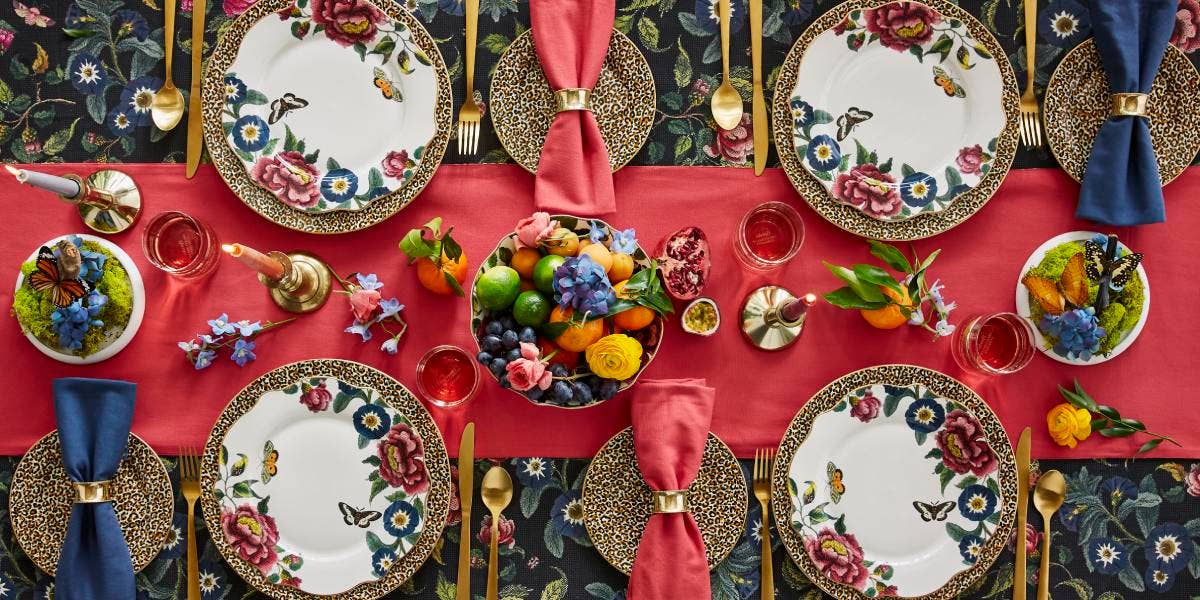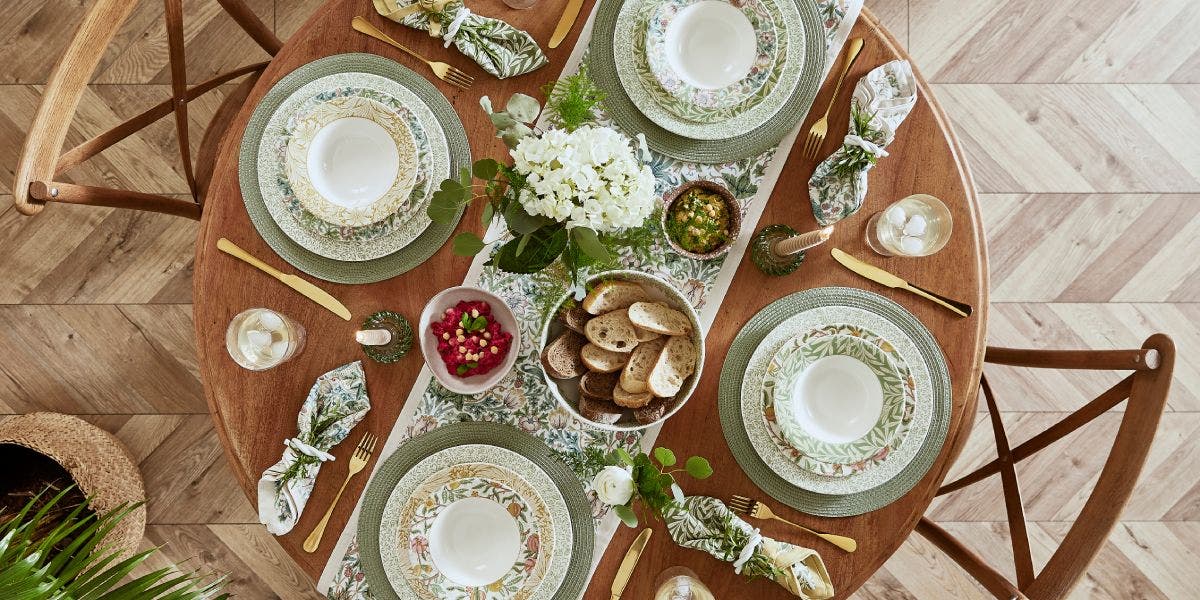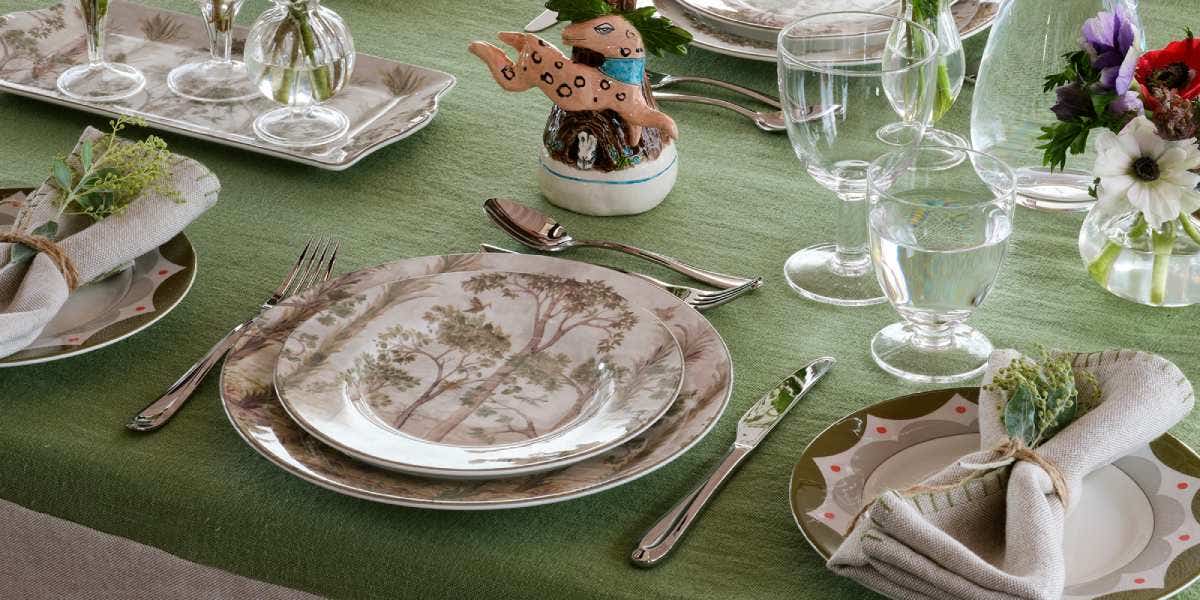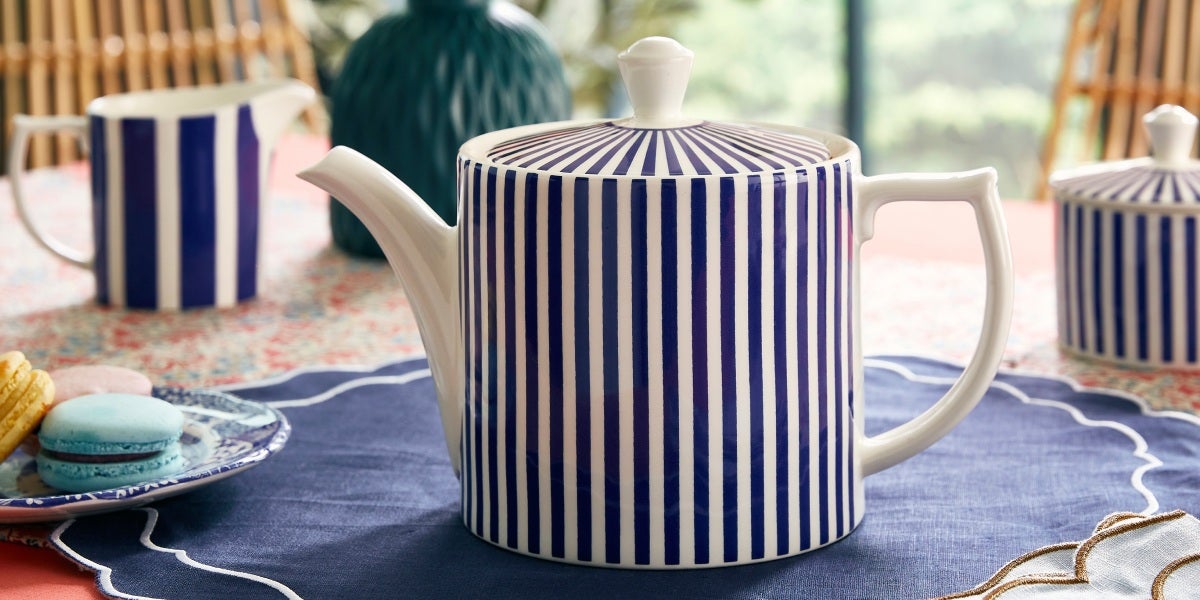
Located just 500 metres from the original Spode factory in Stoke-on-Trent you will find our bustling earthenware factory. Here, a team of talented craftspeople expertly make Spode ceramics including our new blue and white tableware collection, Steccato.
Read on to meet the makers behind the collection, from handle casters to decorators...


Dominic, Mould Maker Apprentice
Meet Dominic, Spode’s Apprentice Mould Maker. Dominic started in Spode’s factory just over two years ago, joining after college. Dominic is part of the talented team who create the moulds that shape our pottery and it’s his job to make Steccato dinner plate moulds.
For this, Dominic starts by making up a mixture of plaster of Paris and water. He then greases the silicone casing before carefully pouring in the mixture and leaving the mould to dry. Once set, any sharp edges are removed, and the mould is left to dry before heading to the factory floor to become a working mould.
During a typical working day Dominic makes up to 60 moulds a day. Each mould is made with exacting precision, resulting in a perfectly formed piece of pottery.
“My favourite aspect of working here is the people. When I first started, I was very shy, with no confidence whatsoever – but everyone gets tired of me now, as I never keep quiet!”
Paul, Handle Caster
Meet Paul, Spode’s Handle Caster. Paul has worked at our Stoke-on-Trent factory for an extraordinary 36 years and is one of the makers behind Steccato’s teacup and mug handles.
Making up to 5,000 handles a day, Paul fills the handle moulds with liquid clay to form the perfect shape. Once dry, he removes the excess clay from the mould, putting aside for recycling, opens the mould and carefully takes each handle out one by one. Paul stacks the shaped handles ready for trimming, drying and applying to the cup body.
“The best thing about my job is the people I work with – a great team makes all the difference!”




Tony, Machine Caster
Meet Tony, Spode’s Machine Caster. Tony has worked in our Stoke-on-Trent factory for 33 years and has been a caster all his working life. Casting is the process of filling moulds with liquid clay to form the piece of pottery, such as a Steccato teapot, sugar pot or cream jug.
Tony’s job is to set the casting machine up, placing the moulds on the machine ready to be filled with slip clay. The filled moulds travel down the conveyor, drying, the excess clay is tipped out and the mould is placed back on the drier back to Tony. Once dry, Tony carefully removes the piece from the mould, removing any excess clay for recycling and ensuring the piece is perfectly formed. The piece is then put aside to dry before it is trimmed and sponged.
Depending on the piece, Tony can cast up to 1,000 pieces a day. It’s also Tony’s job to keep an eye on the quality of the used moulds – once they become rough on the inside, Tony puts them aside for recycling and starts on a new one.
Karen, Lithographer
Meet Karen, one of Spode’s expert decorators, also known as a Lithographer. Karen has worked here for 23 years and has been a pottery decorator since she was 16 years old after completing an apprenticeship straight from school.
When it comes to decorating Steccato, Karen’s job is to apply the striped pattern to a plain, glazed piece of ware. The pattern prints are soaked in warm water and the ceramic piece is warmed under a heated light before Karen starts to decorate, so that she can easily manipulate the print around the piece and remove any creases.
The decoration will appear yellow when Karen first applies them, but once the decorated piece is fired in the kiln, this burns away to leave the blue and white piece. After the main pattern is applied, Karen always finishes a piece with the backstamp and her personal number – each lithographer has their own number, so no matter where the piece of Spode is in the world, if it has Karen’s number on, she knows it’s one she has decorated.
“My favourite thing about being a lithographer here is the people and seeing the finished article at the end of the day – it looks good on the table!”


